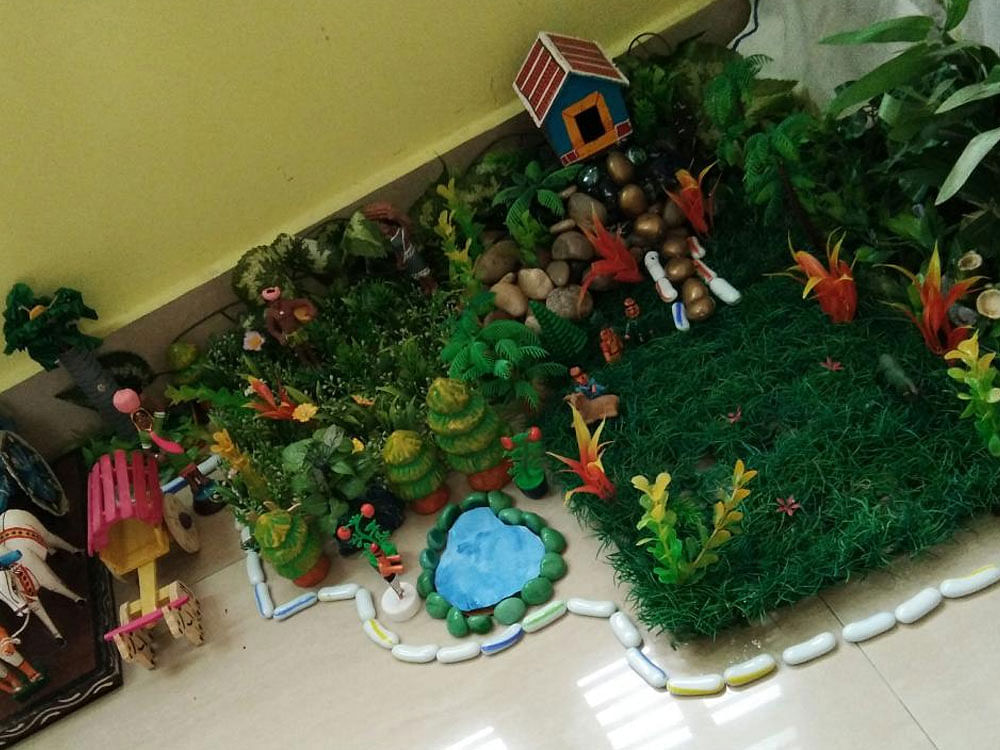
There’s a thing about festivals — you can’t be immune to the cheer and celebrations, irrespective of community and social considerations. ‘Navaratri’ is here and Bengalureans are gearing up to welcome the mother goddess in the grandest way possible.
As has been the trend over the past few years, many are increasingly opting to give a green tinge to their celebrations by opting for eco-friendly methods.
Akhila Madhusudan says, “All my dolls, collected over the past seven years, are made of mud and wood. I have never bought any plastic item to include in the ‘gollu’. Sometimes I myself grow the ragi required for the festivities.”
Another unique aspect of her festivities is the inclusion of edible art. Akhila makes arrangements from grains and vegetables and displays it along with her ‘gollu’.
It is an annual ritual and the items make their way into her food preparations afterwards.
Manasi Kelkar keeps her celebrations simple and eco-friendly by worshipping a small silver idol instead of setting up the usual elaborate displays. “Also we grow the cereals, rice and wheat to be offered to the goddess, along with flowers. Rather than spending money on decoration and more, we try to give it to the needy,” she says.
Shirin Raj, a student, makes it a point to keep her celebrations as eco-friendly as possible. “Dolls made of clay or wood or even cloth should be used by everyone. Plaster of Paris idols, no matter how beautiful the look, should be avoided at all costs. Even for the ‘rangoli’, instead of using chemical colours, natural items like pulses and leaves can be used. When it comes to decoration, give the usual thermocol a miss and opt for palm leaves or other green options.”
Seema Mallick, a housewife, says, “I make the clay ‘murti’ and use natural colours to decorate it. We immerse the idol in a bucket instead of going to the river. Last year we made a painting of the goddess Durga instead of using an idol. Apart from this, we also use brass ‘diyas’ for the celebrations.”
Festivities look great when combined with responsibility and each year, the internet is flooded with ideas to ensure a environment-friendly celebration. Gifts have transitioned from usual mass-produced items to handmade creations and recycled artefacts. Regular ‘diya’ holders are being replaced by greener versions such as decorated coconut shells.
And to curb noise pollution levels, silent dandiya and garba nights are being organised across the courtesy where the participants will be given headphones (remember the Anushka-Ranbir song from ‘Ae Dil Hai Mushkil’?).
Food is another integral part of the festival and Susmitha Subbaraju, owner of ‘Carrots’, says that more people are opting for vegan sweets.
“Animal agriculture is the biggest industrial polluter. People want to lessen their impact on the environment and also eat healthier. We hold a vegan sweet festival every year around this time and the numbers are steadily increasing.”
Deccan Herald is on WhatsApp Channels| Join now for Breaking News & Editor's Picks